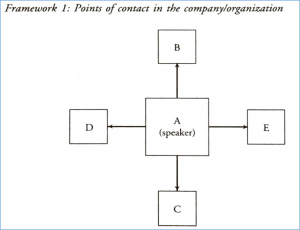(Please note that the date you can see above is when I started this blog; I update it regularly!)
ELT LESSON JAM #4
24 October 2020
My idea: “Google Docs. – pros & cons of using one l-o-n-g Google Doc in breakout rooms”
The idea I presented was based on something I’d tried out (for the first time) in a one-day online workshop. I wanted to know if allowing participants to work in 2s or 3s on their own page(s) with a text, but all on one long Google Doc., would work and be effective.
You can see details of what I did in the workshop, as well as the discussion about and application of the methodology here: (3 pages) Rachel Appleby Summary of Using 1 long Google Doc in breakout rooms.
(If you’re very short of time…) My Conclusions:
- it allowed for choice > learner autonomy
- participants were able to see what others were writing / highlighting
- only one link had to be shared, and for the teacher, it makes it very easy to see what’s going on “at a glance”
- caution would be required if doing this with YLs or Teens

- although I used this in an EAP context (writing journal article abstracts), it has very wide possible applications – e.g. highlighting / noticing language (collocations / phrasal verbs / narrative tenses); underlining ‘favourite’ expressions, – and much more.
You can read lots more, – and how else you could use this – in the link above.
* * * * *
ELT LESSON JAM
12 September 2020
A ‘first’ for ELT Lesson Jamming on zoom – about 20 ideas shared!

This is mine:

Source: Ellis, M. and Johnson, C. (1994). Teaching Business English. OUP
A = your student
B-E = the people they communicate with (at home / at work, etc.)
Students should think of the following. They may need 5-10′ thinking time before they speak. You could start by asking them to think about just one person they communicate with, get them talking about that and see how they get on before focusing on language, or letting them continue.
1: WHO: 3-4 people they communicate with for work, e.g. HR, a colleague, a client, a provider, etc.
2: WHAT they communicate about (topics, issues)
3: HOW they communicate (email, messaging, Zoom, in person, etc.)
The activity works at almost all levels, with one:one or groups of students. It helps if you / the teacher demonstrates it first, and then feeds in appropriate language / phrases * for students to use. (This could be pre, during, after the first stage, or afterwards – depending on students’ levels, and whether you want them to use new language or revise language.)
The beauty of this idea is that it requires minimal lesson prep. However, don’t be fooled into thinking the teacher doesn’t need to do anything! Once the students have had a few minutes to think of each issue (1, 2 + 3), then when they’re speaking – to you in a one:one context, or to another student – they are providing you with masses of information – language for you to bear in mind (for on-the-spot correction – if appropriate; for examples of good language use; for language they need which you can focus on later, etc.), as well as a wealth of content – issues which you can bring in later in the course. Finding out what students do (in their lives, at work) can sometimes be difficult, but give them a suitable prompt, and they’re off! This is invaluable information to help you tailor your classes to their needs and interest.
NB: It works well as a Test-Teach-Test activity too: students to the task talking about one person; you then ‘input’ / raise awareness of useful phrases, and then students continue, talking about the other people they communicate with.
* e.g. (depending on level…)
WHO:
I regularly have meetings with …
My boss calls me on Skype every Monday at 11am.
I phone my accountant at the end of each month.
WHAT ABOUT:
Mostly we have to discuss …
It’s my job to provide information about …
We’re about to launch a new product, so I’m keeping him updated about …
HOW:
We usually speak on the phone, but sometimes set up a Zoom call.
I have a face-to-face meeting with her each Tuesday afternoon.
She sends me a message when …
Good with late teens, adults and business students.
Enjoy!
For more examples of Framework materials, there’s a link towards the end of this blog post by Evan Frendo.
* * * * *
2018, March 16, OUP Business English Online Conference
Making teaching personal: how to bring client-led content into your teaching
Here’s the introductory blogpost: https://oupeltglobalblog.com/2018/02/22/making-teaching-personal-bring-client-led-content-teaching/

 In my webinar on 16 March, I looked at how we can incorporate real-life and authentic experiences and events into a course plan in a more structured manner, in order to enhance the learning experience through better engagement and higher motivation.
In my webinar on 16 March, I looked at how we can incorporate real-life and authentic experiences and events into a course plan in a more structured manner, in order to enhance the learning experience through better engagement and higher motivation.
Handout: 2018Mar16 OUP BE conf Appleby Client led teaching Handout-1snnhhu
Powerpoint slides: 2018Mar16 OUP BE conf Appleby Client led teaching PPSX-1nunm7v
* * *
2016 June
BESIG online symposium 2016
My first attempt at a Pecha Kucha (6’40”).
If you’re a member, you can see a recording on the IATEFL BESIG website besig.org. This was a variation (and abbreviation!) of the talks I gave at NYESZE in Budapest, and IH Barcelona earlier in 2016 (see Conference talks).
THE CONFIDENCE TO STAND UP AND TALK! Seven tips and hooks

A number of WEBINARS, usually accompanied by a blogpost on the OUP ELT Global blog https://oupeltglobalblog.com
DISCOVER WHAT’S DIFFERENT ABOUT THE NEW INTERNATIONAL EXPRESS
http://oupeltglobalblog.com/2013/10/29/discover-whats-different-about-the-new-international-express/
Webinar 6 November 2013 link: …
This post and webinar link to the BESIG Prague conference (November, 2013) – see materials above.
TEACHING BUSINESS ENGLISH ONE-TO-ONE
http://oupeltglobalblog.com/2012/11/29/teaching-business-english-one-to-one/
Webinar 5 December 2012 link: https://ca-sas.bbcollab.com/site/external/recording/playback/link/meeting.jnlp?suid=M.B1BD9B54B71897E5C43DDFFAC955EA&sid=2011204
TEACHING SPEAKING FOR ACADEMIC PURPOSES

https://oupeltglobalblog.com/2012/11/07/teaching-speaking-for-academic-purposes/
“… the challenges of teaching speaking skills in an academic context”
Webinar 21 November 2012 link: https://ca-sas.bbcollab.com/p.jnlp?psid=2012-11-21.0734.M.DB2D783804F69DCB042C513A7861E3.vcr&sid=2011204 (the link at the beginning of the blogpost, end paragraph 1)

